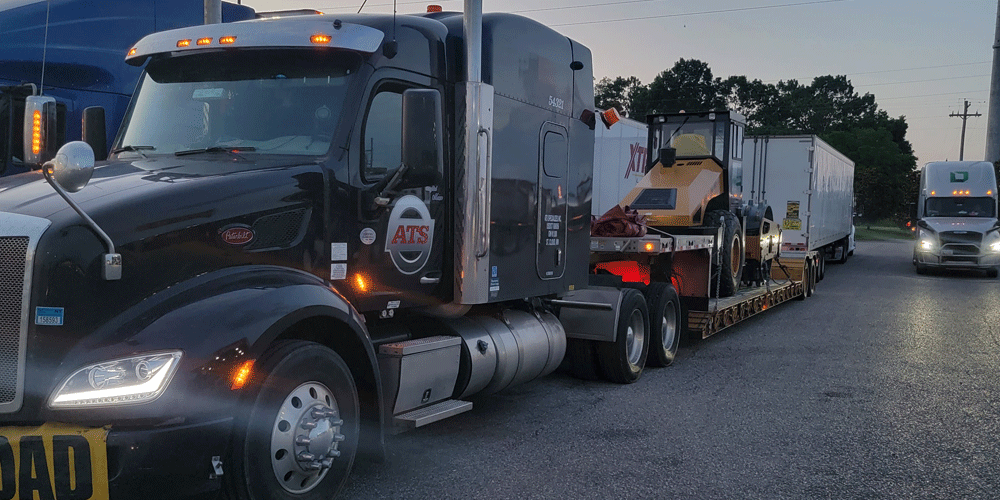Independent Contractor | Owner-operator
Successfully Calculating Cost Per Mile
Samantha joined the Anderson Trucking Family in November of 2012 as a specialized driver manager and managed a fleet of mixed company and contractor drivers. In the spring of 2014, she transitioned to the driver administration department and began working in contractor services. While in contractor services, Samantha familiarized herself with all processes, procedures and information in regards to driver contracts, pay and settlements. She is currently the operations support manager and oversees both the contractor services department as well as the driver settlement department and leads both of her teams to ensure our drivers receive the highest level of service required to help navigate their accounts and settlements on a daily basis.
How do you choose the next load you’ll haul?
Do you choose it based on where you feel like traveling next and where you want to check out the sights? Do you choose them based on areas of the country you don’t want to drive in or the types of loads you don’t want to haul?
Or do you choose the loads that will make you the most money?
One thing is for sure: You should be calculating cost per mile regularly to determine which loads you should select to make a profit.
While determining cost per mile involves a simple calculation, there are a couple of tricks you can implement to ensure you get the most accurate estimate.
At Anderson Trucking Service (ATS), our goal is to make you successful — whether you’re a company driver, a lease-purchase driver or an owner-operator. When you finish reading this article, you’ll understand how to calculate your cost per mile and how to choose your loads accordingly.
The Cost Per Mile Calculation
Cost per mile is a simple equation in which you divide your total expenses for each month (fixed and varied) by the total number of miles you travel each month.
Fixed Expenses
Your fixed expenses are your monthly expenses that are the same every month. They include the following:
- Truck payment
- Tractor and trailer insurance
- Accounting services
- Federal Highway Use Tax (also known as HVUT)
- Rental payments for a transponder or in-cab computer system (an electronic-log device)
You may or may not have some of these fixed expenses. For instance, if you own a truck you won’t have to factor in truck payments. You may not use any type of accounting service either.
Perhaps there are other fixed expenses you’ll need to add to this list as well like permits and licensing.
Variable Expenses
Variable expenses are the expenses that change from month to month depending on how many miles you drive, the routes you drive, the cost of fuel and more. They include the following:
- Maintenance account
- Fuel
- Tolls
- Pay (optional)
It’s not uncommon for a leasing agency to require a driver to put a certain amount of money into a maintenance account for every mile they drive. Therefore, the amount varies from month to month. This money helps cover the cost of maintenance expenses should issues arise. If you already own your truck, you should still set money aside every month.
Of course, the cost of fuel can vary day to day and the cost of tolls depends on what states you drive through. It’s a good idea to choose a month where you did pay for tolls.
Some drivers decide to add in their pay as part of their variable expenses, but that’s optional. This ensures that a profit is factored into your cost per mile. When drivers do this, it helps them choose loads that will generate the profit they want.
Some drivers skip this step entirely and just pay themselves whatever is left after their fixed and variable expenses are paid.
Miles Driven
There are two ways you can track your miles.
You can use actual odometer miles or you can use the settled miles that your carrier or customer recognizes as miles driven for the loads you hauled. There can be a discrepancy between these two numbers.
At times, a customer may only pay for the shortest route. If you need to detour for construction, a customer may not pay for those extra miles and the odometer miles will show differently than the customer miles.
Cost Per Mile Best Practices
Once you’ve divided your expenses by your miles driven for the month, you’ll be left with your cost per mile.
The most complicated part of the equation is understanding your fixed and varied expenses. Ideally, you should use a previous month’s expenses in which you felt you were productive. A month where you were at the house for a week and a half or broken down won’t give you an accurate picture of your cost per mile. Choose a month where you were productive and consistently working.
Because the industry is always changing, you should calculate your cost per mile every other month so you have an accurate number to follow. As the market shifts, fuel costs increase, rates drop and trucks are harder to find, your fixed and variable expenses will probably go up. If you don’t adjust your cost per mile calculation with the most recent numbers, you may struggle to be profitable and not understand why.
How to Choose Loads Based on Your Cost Per Mile
To help understand how you can use your cost per mile to choose loads, let’s do some quick math using one owner-operator’s costs and miles driven in April.
- Fixed Expenses: $2,500
- Variable Expenses: $3,700
- Miles Traveled: 6,400
Divide the expenses by the miles traveled to get the cost per mile.
- Cost Per Mile: $0.97
With this cost per mile, if the driver wants to make a profit, they’ll need to choose loads that pay more than 97 cents per mile (CPM).
Every load you haul doesn’t need to pay higher than your cost per mile, but you should choose high-paying loads to balance out lower-paying loads if you want to make a profit.
For instance, maybe you decide to take a load to California and it pays you $1.37 per mile but the load getting out of California only pays 90 CPM. Because you made 40 cents profit for every mile you drove out to California, losing seven cents on every mile leaving California isn’t so bad. On average, you’re still making a profit.
Remember: If you’re making 97 cents on every load and you didn’t factor your pay into your variable expenses, you won’t be making a profit. You’ll be making enough money only to cover your operating costs. That means, using the numbers above, every load you choose to haul should pay well over 97 CPM. You want to make enough money that you can afford to live and pay your bills at home, too.
Make sure that every load you choose either pays higher than your cost per mile or will balance out with your next load or two.
It’s best practice to plan out your loads a few in advance so that you’re always looking at the bigger picture. Choose loads that will make you profitable for the month on the whole. Simply choosing one load that pays well can be a bad move if you enter a dead market and can’t find a load out.
You can calculate how much you’re being paid per mile even if you’re not given the CPM rate. Some customers may pay a flat fee. For example, maybe they’re paying you $750 for a load going 600 miles. If you divide the payout by the miles driven, it equates to $1.25 per mile. Is that enough to make you profitable?
If you’re offered percentage pay, you can figure out how much you’ll be making per mile. Be sure you do this before you accept any load.
Move More Loads and Make More Money
When you receive a load offer, you should always ask: “Will this make me profitable or not?” If it won’t make you profitable — unless you have a plan to take a load that pays extremely well afterward — you shouldn’t take it.
If you need assistance choosing loads to make you profitable, talk to your driver manager for guidance. It’s their job to support you and help you make decisions in your best interest.
Check out these other articles that will help you successfully choose your loads:





